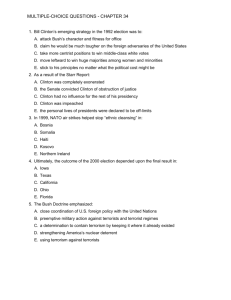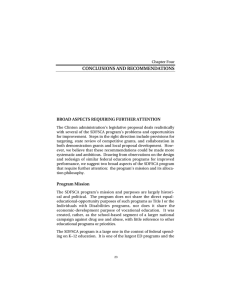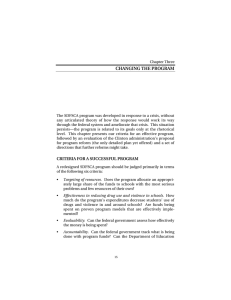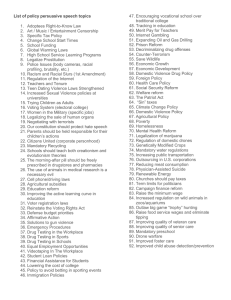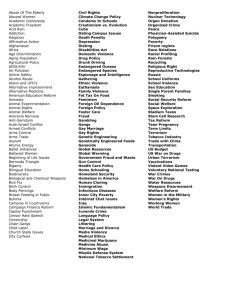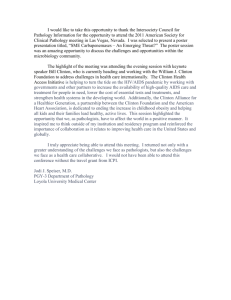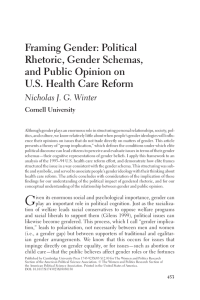SUMMARY
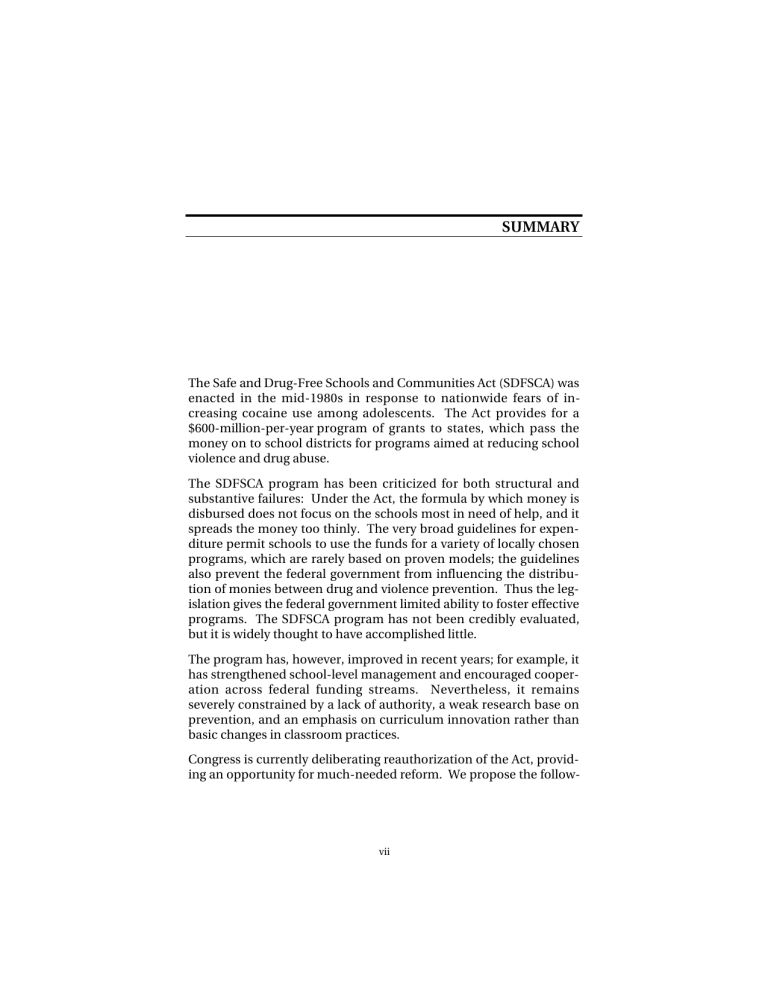
SUMMARY
The Safe and Drug-Free Schools and Communities Act (SDFSCA) was enacted in the mid-1980s in response to nationwide fears of increasing cocaine use among adolescents. The Act provides for a
$600-million-per-year program of grants to states, which pass the money on to school districts for programs aimed at reducing school violence and drug abuse.
The SDFSCA program has been criticized for both structural and substantive failures: Under the Act, the formula by which money is disbursed does not focus on the schools most in need of help, and it spreads the money too thinly. The very broad guidelines for expenditure permit schools to use the funds for a variety of locally chosen programs, which are rarely based on proven models; the guidelines also prevent the federal government from influencing the distribution of monies between drug and violence prevention. Thus the legislation gives the federal government limited ability to foster effective programs. The SDFSCA program has not been credibly evaluated, but it is widely thought to have accomplished little.
The program has, however, improved in recent years; for example, it has strengthened school-level management and encouraged cooperation across federal funding streams. Nevertheless, it remains severely constrained by a lack of authority, a weak research base on prevention, and an emphasis on curriculum innovation rather than basic changes in classroom practices.
Congress is currently deliberating reauthorization of the Act, providing an opportunity for much-needed reform. We propose the followvii
viii Options for Restructuring the SDFSCA ing six criteria by which reform options should be judged. Reforms should
• Target schools and children most in need.
• Ensure the implementation of effective programs.
• Promote meaningful evaluation.
• Require accountability.
• Improve program capacity.
• Keep administrative costs low.
The Clinton and Bush administrations have both offered proposals for reform of the program. The Bush administration has proposed consolidating the program with an after-school learning program but has not yet offered any specifics for further analysis. The Clinton administration’s proposal calls for better targeting, an enhanced state role in competition for awards, increased emphasis on knowledge-based programs, and thorough evaluation. This proposal moves in the right direction, but it falls short on several criteria.
We believe that the Clinton administration’s proposal could be strengthened in three ways. First, the SDFSCA program should be given more authority for capacity-building in the form of teacher training, research, and demonstrations. Second, even tighter targeting is required—under the proposal, the grants to most local districts will still be too small to do much good. Establishing a minimum size for grants (per pupil and per district) and encouraging small school districts to form coalitions could help solve this problem. Provisions for state or local matching funds are another option that would have the same effect. Third, the proposed evaluation requirement goes too far: For programs receiving grants of less than $25,000, the requirement will impose unacceptably high administrative costs. Instead, the federal government should undertake regular national evaluations of program effectiveness, as it has in other educational areas.
There is near-consensus that the current SDFSCA program structure is profoundly flawed; we are unaware of anyone who will explicitly defend it. Yet the problems addressed by the program are so serious and widespread that the federal government cannot reasonably af-
Summary ix ford to abandon its commitment. Of the few proposals for reform that have been offered, that of the Clinton administration is the only one currently being discussed, and it addresses only some of the ways in which the program could be improved. If the SDFSCA program is to survive and flourish, it must become more demonstrably effective at reducing school-related drug use and violence.

